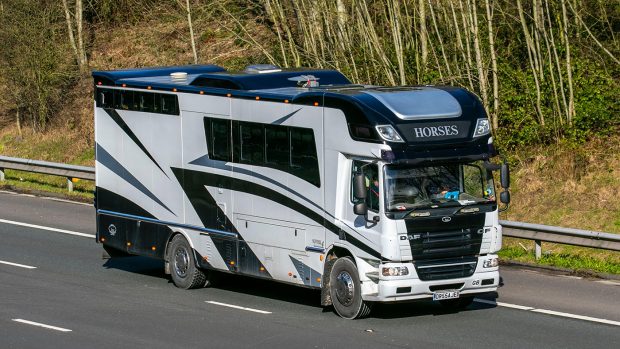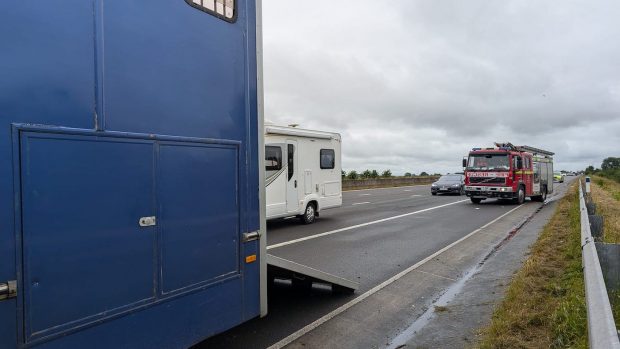Q: Following the news article in H&H (12 July) about the horrific motorway accident where the flooring of a lorry gave way, can you advise what safety tests should be performed and how often, to ensure our horses’ safety?
JC, Glos
IT is obviously vital to maintain the interior of a lorry in order to travel safely and to make sure the vehicle is roadworthy for insurance purposes. While floor checks do form part of a lorry’s plating, this does not guarantee long-term floor safety, and owners should also be vigilant about checking their own vehicles as follows:
Lift rubber mats at least once a month and allow the floor to dry out.
Check routinely for signs of mould or white patches on wooden floors.
A correctly installed aluminium plank floor (not chequer-plate sheet) is preferable to any type of wooden floor. Aluminium is lighter, stronger, safer and longer lasting. However, aluminium floors still benefit from having the mats lifted to dry out.
In the interests of safety, do not travel horses in a vehicle with just a single skin wooden floor.
If you do have a well-maintained, double wooden floor, check underneath your lorry or trailer at least every three months for any signs of softness in the wood, and to ensure that the steel cross-members (bearers) are not rusting.
If having a new aluminium floor fitted, check the installer is using quality materials — ask to see them.
Make sure the installer is using an isolating membrane between the steel chassis and the aluminium flooring to prevent electrolytic action; this occurs when metals such as aluminium and non-galvanised fittings (such as screws and bolts) come into contact with each other, trade electrons and corrode.
If possible, have your horse trailer, or lorry body and chassis, inspected at least twice a year.
When making regular checks yourself, if you find anything suspicious, take the vehicle to a horsebox specialist immediately for a safety check; reputable companies charge a minimal fee. Choose a local company with excellent references.
According to Jeremy Lawton of Shearwater Insurance Services, when taking out a policy, horsebox owners must sign a declaration confirming the vehicle is roadworthy.
“It is the individual’s responsibility to tell their insurance company if there is anything that may influence the insurer’s acceptance,” he explains.
“It is also the horsebox owner’s duty to ensure a reputable horsebox builder has thoroughly checked the floor, as failure to do so could put the policy at risk in the event of an accident. It would be irresponsible of an owner to have not carried out the above checks, as it obviously puts the welfare of their horses at risk.
“Also, when a lorry has a change of use and is converted to a horsebox, it is important that weight and use factors are considered. When carrying horses, there is an increased risk of the floor rotting. An insurer would expect these considerations to have been looked at before insuring a vehicle,” concludes Jeremy.
Information
Shearwater Insurance Services Ltd Tel: 0870 071 8666 www.shearwater-insurance.co.uk
The Organisation of Horsebox and Trailer Owners offers advice and also runs a vehicle inspection service Tel: 01488 657651 www.ohto.co.uk
This Q&A was first published in Horse & Hound (2 August, ’07)



